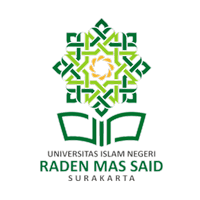Representasi Walisongo dan Kerajaan Jawa pada Naskah Ahla Musamarah fi Hikayati Auliail ‘Ashrah karya Syaikh Abi Fadhol Senori Tuban : kajian Wacana Kritis Norman Fairclough
Contributors
Isniyatun Niswah MZ
Syaifullah
Keywords
Proceeding
Track
General Track
License
Copyright (c) 2025 International Conference on Cultures & Languages

This work is licensed under a Creative Commons Attribution-NonCommercial-NoDerivatives 4.0 International License.
Abstract
Manuscripts known as Islamic manuscripts of the archipelago are an intellectual heritage that preserves traces of interaction between Islam, culture, and local traditions. One such example is Ahla Musamarah fi Hikayati Auliail ‘Ashrah by Syaikh Abi Fadhol Senori Tuban, an Arabic-language manuscript that has undergone codicological analysis and publication. This manuscript recounts the missionary journeys of the Walisongo and their connection to the political power of the Javanese Kingdom. This manuscript is worth studying because it was written by a scholar known for his expertise in fiqh, making it intriguing to analyze using a comprehensive theoretical framework. Therefore, this study employs Norman Fairclough's Critical Discourse Analysis with its three levels of analysis: text analysis, which examines the textual dimension and the interpretation of the relationship with the text; discourse practice; and socio-cultural analysis, which explores the relationship between the discourse process and the local socio-cultural context. With this theory, the Ahla Musamarah manuscript can reveal the position of the Walisongo in the archipelago and its correlation with the Javanese kings and the ideology constructed in this manuscript. This study uses the library research method, where the primary data source is the Arabic manuscript Ahla Musamarah, while the secondary data consists of books, articles, and other sources related to the title. The analytical model used is content analysis with the following steps: text analysis to identify lexical choices and sentence structure; discourse analysis to examine the process of text production and distribution in the context of Walisongo and the Javanese kingdom; and social relations analysis to reveal the ideology behind the creation of this manuscript. The research findings indicate that the representation of Walisongo in this manuscript is constructed as a religious and political figure who gains cultural legitimacy through his connection with Javanese royal symbols. The narrative combines historical elements, myths, and Islamic teachings to create an idealized image that reinforces Islamic identity in Java. These findings confirm that the Ahla Musamarah manuscript serves as a space for discourse production that not only records events but also shapes ideology and the construction of Islamic identity in Java.

